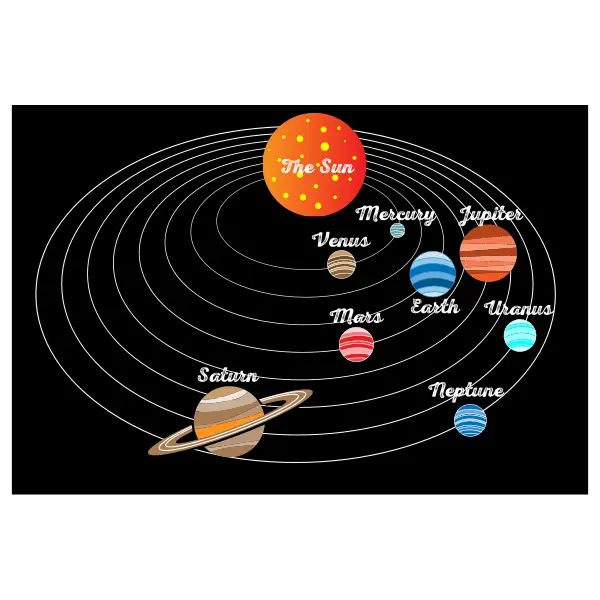The first stargazers discovered that the bright planets in our sky follow the same path as the Sun and Moon, more or less. The zodiac is the name we give to the sky path. Today, we know that this sky path – this zodiac – is the result of our solar system’s planets orbiting our Sun in a single plane. However, we now know about thousands of other planets, known as exoplanets, that distant circle stars. Do they also orbit their suns in a single plane, more or less? Would you notice that the system’s planets cross the sky in about the same route as the local star if you stood on the surface of an exoplanet (assuming it had a solid surface to stand on)?
The zodiac is the name we give to the sky path that planets (including the Sun and Moon) follow in our sky. Just like how Earth’s orbit around the Sun takes a year, so too do the planets take years to go from one zodiac sign to another. The zodiac forms 12 constellations, each with their own particular mythological significance, and each one ruled by one of the ancient gods of Olympus. Knowing what the zodiac means for star-gazers can help you better understand your place in the Universe!
The four inner planets, the asteroid belt, and the gas giant worlds all orbit the Sun in the same plane making our Solar System a well-ordered place. Even when you travel further out into the Kuiper belt, the objects appear to align with the same plane. Given that the Sun is spherical and that stars appear to have planets orbiting in every direction possible, it appears unlikely that all of these worlds are aligned by chance. Every Solar System we’ve seen outside of our own appears to have its worlds aligned in the same plane, at least where we’ve been able to detect it. To the best of our knowledge, this is the science underlying what’s going on.
Because of how the Sun evolved, all of the planets in the solar system orbit on the same plane. The ecliptic is the plane between the Earth and the Sun. The majority of our solar system’s major planets are within 3 degrees of the ecliptic. Mercury is the exception; its orbit is 7 degrees off the ecliptic. Pluto, the dwarf planet, is an obvious exception to this rule. Its orbit is tilted by more than 17 degrees to the ecliptic. The fact that most of our solar system’s massive planets orbit close to the ecliptic plane makes sense.
The solar system is a set of planets, moons, and other bodies (such as dwarf planets or comets) that orbit around a star. This star is our Sun. The solar system also includes all their orbiting objects and dust. There are eight major planets in our solar system: Mercury, Venus, Earth, Mars, Jupiter, Saturn, Uranus and Neptune. Then there are dwarf planets like Pluto and Eris, which are smaller than major planets but larger than minor ones like asteroids.
As gravity drew its constituent pieces toward the center, a vast cloud of dust began to compress some 4.5 billion years ago. It’s considered to have formed from a gaseous and dusty cloud in space. This dust cloud swirled slowly initially but suddenly accelerated as it contracted, similar to how a figure skater spins faster when she pulls her arms closer to her body. (Angular momentum is the physical law that causes things to spin faster as they compress.) The cloud was flattened into a pancake or disc by the faster rotation, with the Sun in the center and planets forming within the same surface. Planetary systems surrounding other stars are likely to originate in the same way. The Sun and planets are thought to have formed from this disc, which explains why the planets still orbit our Sun on a single plane today.
![]()
